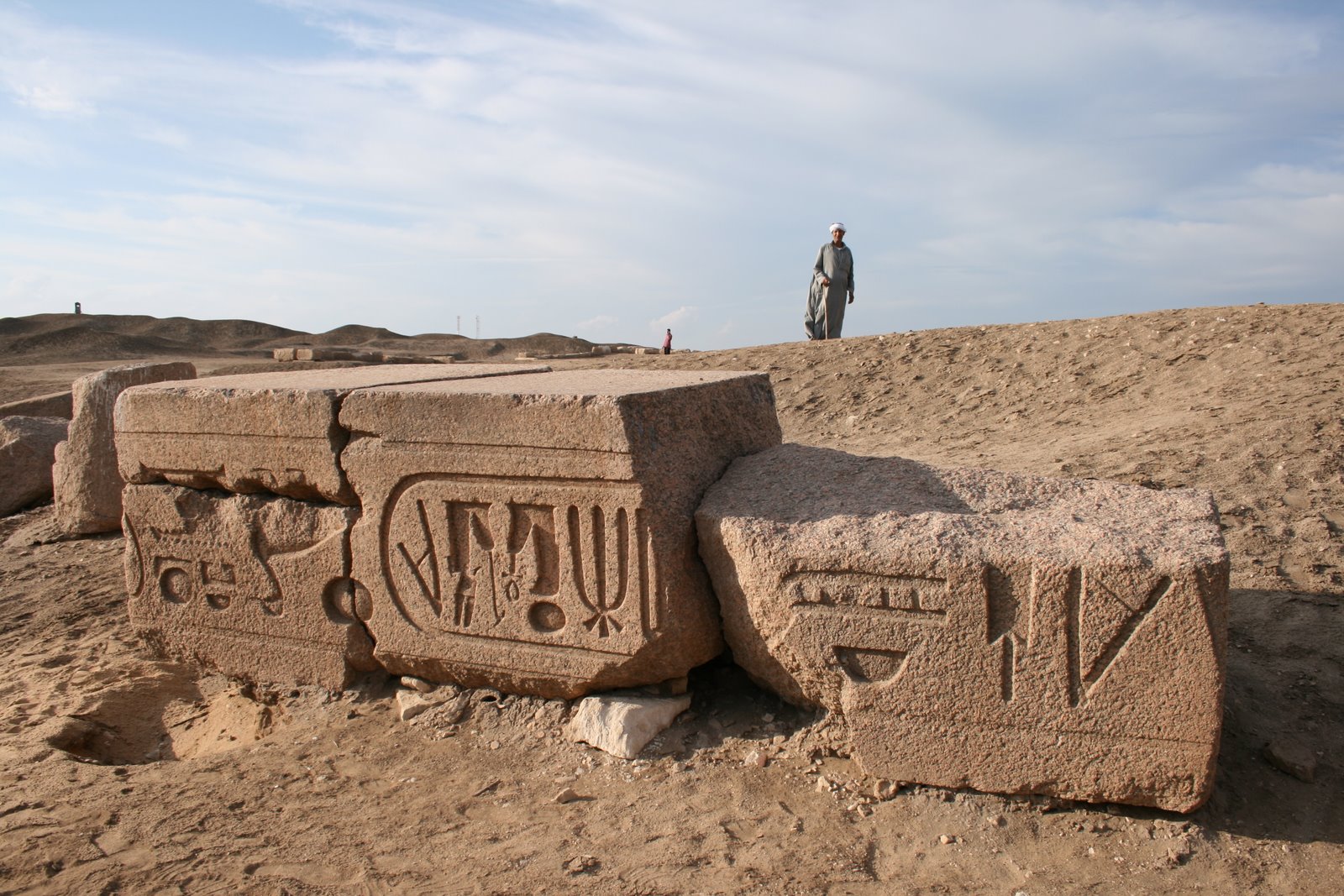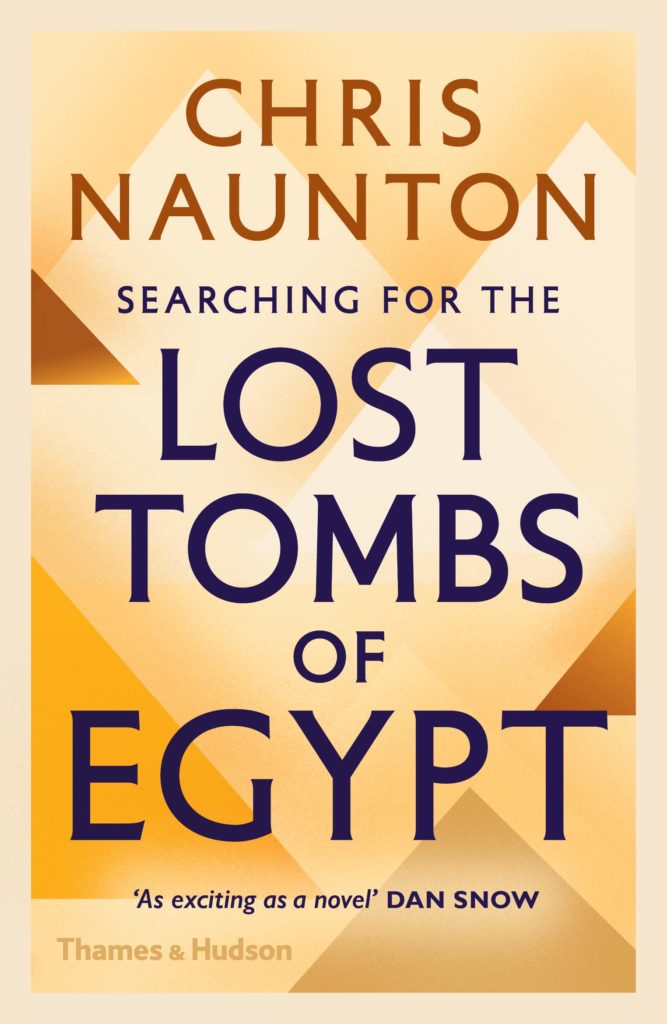 In the past few years, the Egyptian Ministry of Antiquities has had an active policy of reporting new discoveries in Egypt on a frequent basis, to keep Egypt positively in the news as well as interest tourists in visiting the country. Indeed tourism has largely picked up again since the 2011 revolution, and in the annual excavation season during the winter months archaeological sites can be seen brimming with activity. Increasingly though, people begin to wonder what we will do with all those discoveries, as there is still sufficient material in storerooms to keep Egyptologists busy for a century without putting another pick in the ground. The problem is that funding is still more easily obtained for finding (pretty) things, rather than for the subsequent painstaking research and publication.
In the past few years, the Egyptian Ministry of Antiquities has had an active policy of reporting new discoveries in Egypt on a frequent basis, to keep Egypt positively in the news as well as interest tourists in visiting the country. Indeed tourism has largely picked up again since the 2011 revolution, and in the annual excavation season during the winter months archaeological sites can be seen brimming with activity. Increasingly though, people begin to wonder what we will do with all those discoveries, as there is still sufficient material in storerooms to keep Egyptologists busy for a century without putting another pick in the ground. The problem is that funding is still more easily obtained for finding (pretty) things, rather than for the subsequent painstaking research and publication.
This is the cautious tone with which Chris Naunton begins his Searching for the Lost Tombs of Egypt (published in 2018, pardon my extremely slow reviewing): we don’t really need to find new tombs, but we sincerely want to. The book is both about spectacular discoveries and more questionable quests to find tombs based on doubtful theories of the needle-in-a-haystack kind. It is a cleanly designed book with elegant black-and-white photographs (as well as some colour ones), easily readable, sketching parts of the history of ancient Egypt and the search (sometimes in vain) for ‘lost’ tombs. It should interest both Egyptologists looking for some light reading and the public alike. Due to the nature of the subject it is a bit of an open ended story, dealing in seven chapters with as much ‘ancient celebrities’ that have so far been unaccounted for in the archaeological record.
First Imhotep is discussed, the famous architect and innovator behind Djoser’s Step Pyramid complex, who was in later times venerated as a god. Archaeologist Walter Bryan Emery figured Imhotep must have been buried at Saqqara, where he discovered the tomb of Hetepka and the so called ibis catacombs (filled with ibis mummies that were sold to ancient tourists as votive objects), but could not finish his search due to ill health. In fact it could well be that Imhotep’s tomb, stripped of its original furnishings, was indeed found by Emery. Read more about Naunton’s private search for the tomb of Imhotep.
Naunton then takes a big leap into the New Kingdom (a pity for me as an Old Kingdom lover), to the Valley of the Kings that was in use for 400 years. The tomb we are missing here is that of Amenhotep I, the second king of the 18th dynasty. While his predecessors were buried at Dra Abu el-Naga and his successors in the valley, his tomb must be around somewhere. The Abbott Papyrus detailing the famous tomb robberies gives an almost visual description of the location, but it has nevertheless not been identified. A possible candidate could be KV39, a tomb discovered by Arthur Weigall near the workmen’s huts. Howard Carter suspected a tomb at Dra Abu el-Naga, while Daniel Polz who excavated there in 1991 had his eye on a tomb in that vicinity as well. Most intriguingly is the ‘Polish Cliff Mission’ at Deir el-Bahari where, halfway up the steep slopes above the temple of Hatshepsut, Andrzej Niwinski is determined to locate a royal tomb. In 2014 I had the pleasure of visiting this impossible site, where Niwinski tirelessly explained his findings and theories while the sun beat down relentlessly. Ah, good times! The climb and view alone are worth the trouble.
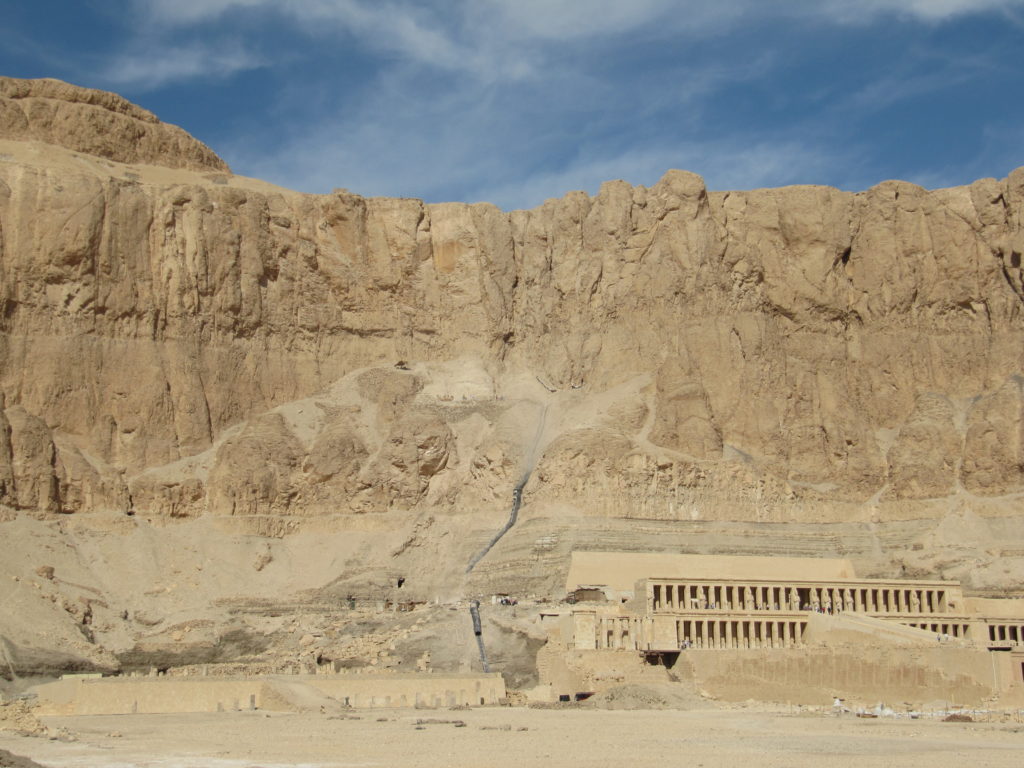
The location of the Polish Cliff Mission above Deir el-Bahari
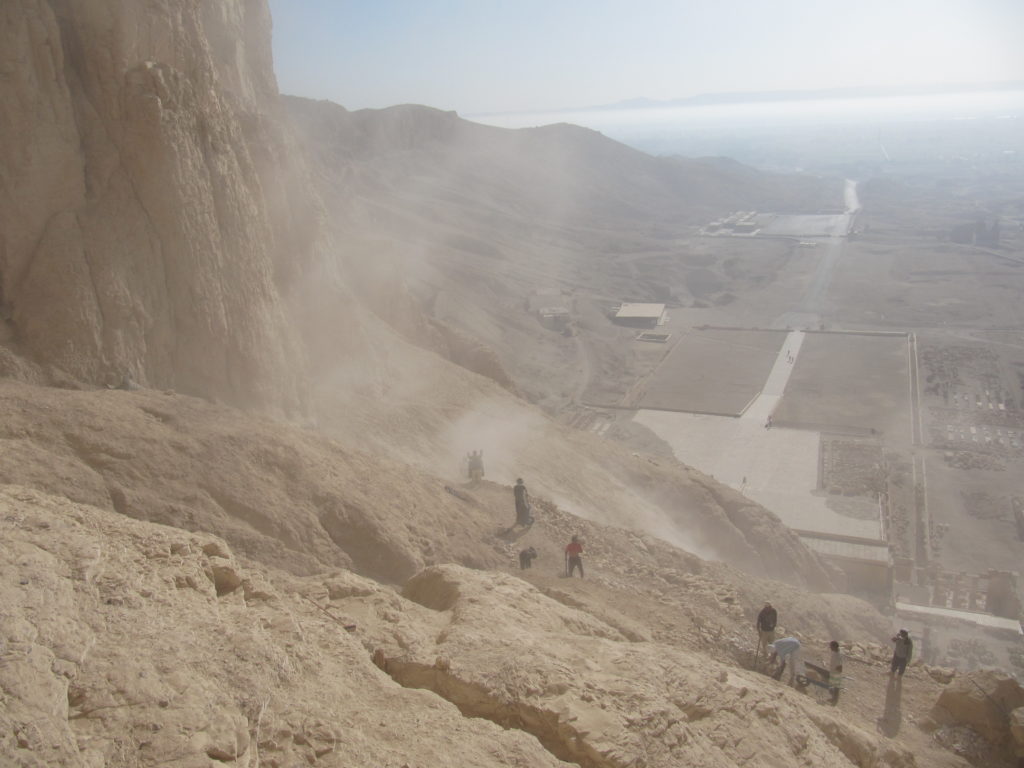
The view from above
Next up are the Amarna royals. The discovery of the more or less intact tomb of Tutankhamun in 1922 excited a bout of Egyptomania and ongoing interest in this elusive period. While Akhenaten had a royal tomb built at his new capital Amarna (‘Akhetaten’) in Middle Egypt, his presumed mummy was undiscovered until 1907, when Theodore Davis and Edward Ayrton opened KV55. They found a sarcophagus with its face and cartouche deliberately damaged. After some initital confusion over its sex, the mummy was pronounced male. The sarcophagus clearly featured Akhenaten’s titles, although the mummy was found to be in its twenties, while Akhenaten ruled for 17 years and must have been older when he died. Then saga continues with the intriguing Nefertiti, that most beautiful of women who may or may not have ruled as pharaoh, possibly but not certainly in the guise of the male ‘Smenkhkare’. Egyptologist Nicholas Reeves in 2015 proposed the theory that many of dear old Tut’s funerary equipment was in fact meant for Nefertiti, and that newly made 3D images of the young king’s tomb revealed the location of her burial chamber. Read Reeves’ paper on the subject.
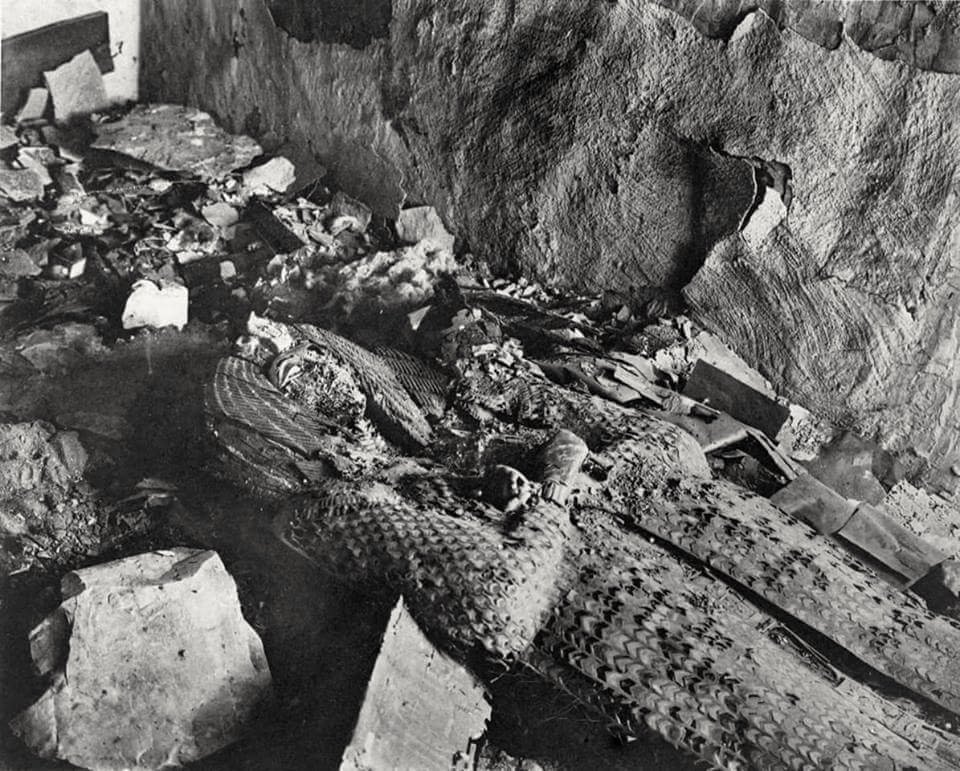
The discovery of the anonymous royal in KV55
Another theory is that Nefertiti was found in 1898 by Victor Loret in the cache of royal mummies numbered KV35, as the so called ‘Elder Lady’ (be sure to google her if you like the sight of mummies – she’s gorgeous). Subsequent CT scans and ancient DNA sampling of several mummies has not been conclusive. The Amarna royals continue to elude us.
A similarly confusing period of mummy hauling and reburial took place after the collapse of the 20th dynasty, when invading Libyans and a declining economy led to frequent strikes and tomb robberies among the artisans entrusted with building the royal tombs in the first place. Amidst this chaos, royal mummies were taken out of their tombs in order to be reburied in secret caches, such as KV35 and TT320. The latter was discovered by the notorious Abd el-Rassoul brothers around 1881, selling parts of its contents on the thriving antiquities market. When archaeologists Emil Brugsch and Ahmed Kamal learned of the theft, they cleared the cache within a week using a local workforce while ‘armed to the teeth’. A story lovingly recounted in the 1969 film Al-Mummia (‘The Night of Counting the Years’).
Due to the hasty clearance of the cache (without proper note-taking), the confusion of mummies in wrong coffins was only increased, and there are still some royals missing. One of these is Herihor, technically not a king but expected to be buried as one. John Romer in his 1982 tv series lays out the theory that Herihor might be found in the desert wadis stretching out behind the Valley of the Kings and Queens. Howard Carter had found the queenly tomb of Hatshepsut there in 1916-17, as well as countless pathways, huts and graffiti. However, Piers Litherland, having excavated in the area, does not expect Herihor to be buried there. The mystery continues…
A big discovery, rivalling that of the tomb of Tutankhamun, was made just before the Second World War in the delta town of Tanis. There, Pierre Montet found the tombs of several kings of the Third Intermediate Period, including their silver coffins and golden masks. Unfortunately, war broke out not soon after and the discovery never received the attention it could have generated. Egyptologists in no way agree about the succession of kings during this period, and some gaps still exist. It is hard to look for these missing kings, as it is unclear whether they were buried at Tanis, Tell Basta, Memphis or somewhere else.
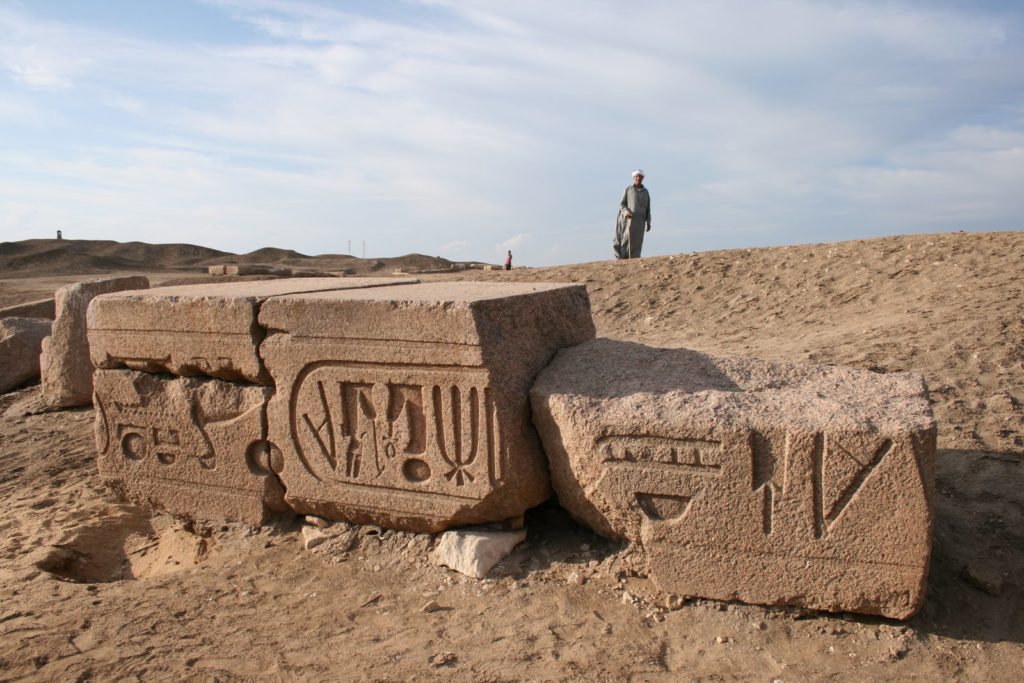
The site of Tanis today (or rather in 2008)
The next to last chapter deals with Alexander the Great, and here we enter the realm of overwhelming and sometimes contradicting written evidence given by classical authors. When Alex died at Babylon in 323 BC, his body was supposedly mummified in Egyptian fashion and temporarily buried at Saqqara. While Alexander’s general Ptolemy developed the metropolitan city-to-be of Alexandria, a more permanent burial site was to be found for him there. Unfortunately, Naunton thinks it unlikely to have survived, or else it is buried deeply underneath the current street level.
Which leads us to Cleopatra, the Cleopatra, that is to say the 7th, last of the Ptolemies, with rugs and asps and all. Classic sources couldn’t get enough of her alliances with both Julius Caesar and Mark Anthony, sealed by a bunch of children. The entire royal palace complex that is so lovingly reconstructed in Assassin’s Creed Origins is now submerged under the waves of the Mediterranean, where in true Jacques Cousteau fashion it is being excavated by French researchers in that most romantic of endeavours: underwater archaeology. Another silly theory places her tomb at Taposiris Magna, 45 km west of Alexandria, where a lawyer (!) has been trying to locate it. (Things like this make me wonder why I am still pursuing a costly Egyptological education). Naunton carefully circumscribes having to pronounce the lawyer’s theory as utter bollocks.
In conclusion: tombs are still to be found, be it royal or otherwise. Think only of the utter joy of finding an intact tomb such as that of Henu at Deir el-Bersha, with his flipflops and wooden statues still in place on his intact coffin. As a disclaimer afterthought, Naunton admits that looking for lost tombs resides in the sensationalist corner. He encourages his readers to be critical, which is a fair point to make in this world of fake news. Egyptology will always have to deal with sensation, and isn’t this secretly what lured us to the field in the first place?
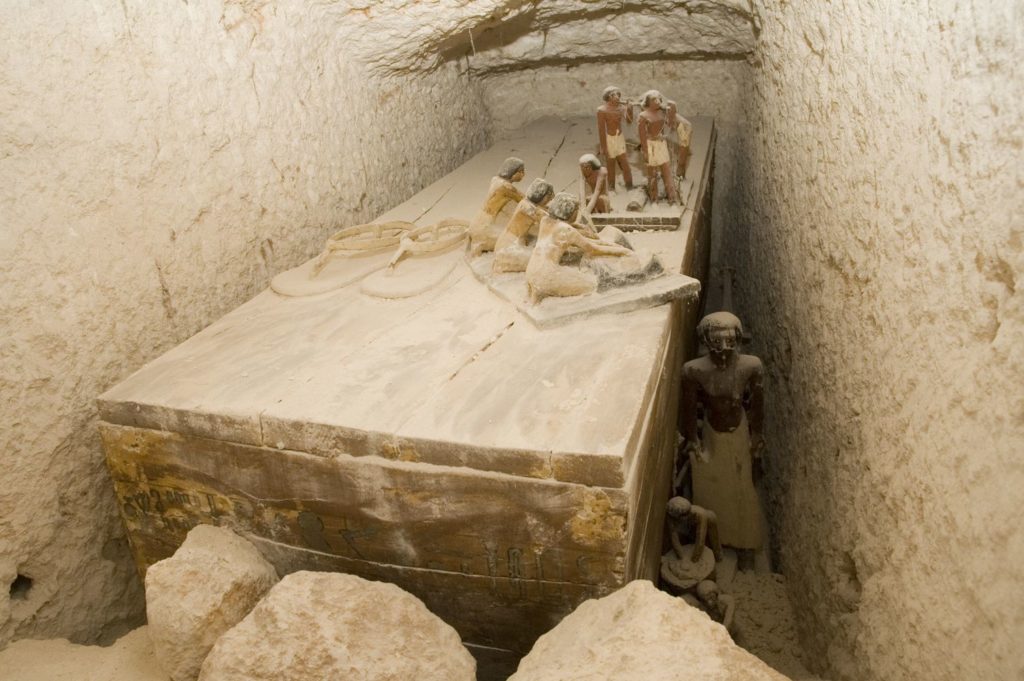
The gorgeous tomb of Henu at Deir el-Bersha (© KU Leuven)
